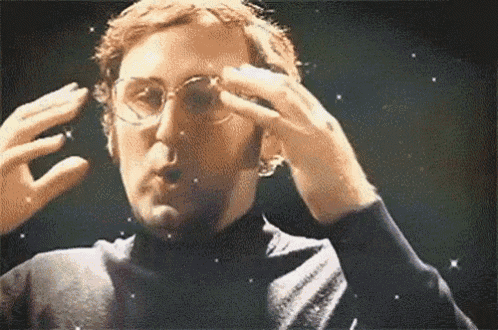Listened to this Radiolab podcast about colour. And it’s got me thinking that maybe theres a lot more to colour perception than we know. In the podcast, the presenters interview linguist Guy Deutscher. Deutcher talks about William Gladstone’s research into The Iliad by Homer, and how lots of colours are described unusually; honey is described as green, the sea is described as wine red, and the sky is often referred to as bronze. So was Homer colourblind? It turns out not, and his psychedelic palette was common in ancient greek writing. One thing that sticks out is the absolute absence of blue. As it turns out, the Ancient Greeks hadn’t invented the concept of blue yet. This is quite complicated to explain, but it sounds like, seen as blue is quite an uncommon colour outside of the manufactured world, the ancient greeks didn’t ever really need a word to talk about it. So what about the sky? Deutscher makes reference to a slightly anecdotal experiment he performed on his own daughter: He brought her up teaching her all the colours, blue included, but never mentioned that the sky itself was blue. Eventually, he put the question to her: what colour is the sky? And his daughter didn’t understand the question, and couldn’t answer. Eventually, after a couple months, she came to a conclusion; the sky is white.
Supposedly, most older civilisations didn’t have a word for blue either, for similar reasons. In fact, colours tend to be “discovered” in the same order in most cultures. The pattern of these colours’ discovery follows another pattern: the invention of new dyes. Blue dye is hard to make naturally so it comes a lot later. The podcast also interviews Jules Davidoff, professor of neuropsychology at London University. Davidoff worked with members of the Himba tribe, in Nambia. The Himba are similar to the Ancient Greeks in that they also don’t have a word for blue. Davidoff showed preformed a test; he presented members of the Himba tribe with a selection of squares on a laptop. All except one of the squares was green. the final square was blue. A simple question was posed: which square is different? To the Himba participants, there was no difference. Perhaps then, we only learn colours as labels for certain wavelengths of light, and train our brains to interpret them as so; that colour doesn’t intrinsically look like anything at all. This lends credence to the idea of colour being qualia: There really must be no standard for what blue is, or what red is, outside of vague ranges of wavelengths of light. One persons blue really could look nothing like someone else’s, and there would be no way to know one way or another.
What does this mean for colourblindness, then? I supposedly am biologically incapable of seeing green. This helps me understand how I, personally, have an idea of green in my own perception. Grass, for instance, looks “green” to me, and I think of things that look like grass as being green. I know things famous for being green are green. I used to think blonde people had green hair when I was little. But as I’ve grown up I no longer percieve lighter haired people as having green hair. There evidently is so much more going on with colour perception than cones in the eye. Wow.

